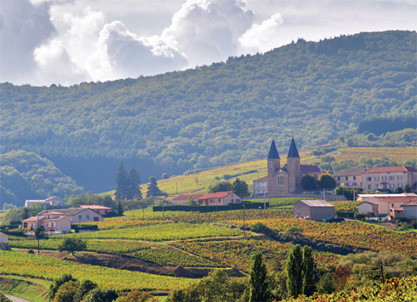Verdant hills, elegant châteaux and ever more serious wines make this stunning region well worth a detour from neighbouring Burgundy. Read the full guide to Beaujolais, including the best wineries to visit, plus top places to stay, eat, shop and relax.

Beaujolais fact file:
Planted area: 19,000ha
Main grape: Gamay (99% of production)
Production (2009): 843,000hl (of which 266,000hl are Beaujolais Nouveau)
Main soil: granite and limestone-clay
Introduction:
Hand on heart, when did you last stop off to explore the Beaujolais region, rather than just barrelling on down the Autoroute du Soleil headed for Provence, Italy or Spain? Come to that, when did you last taste some memorable – even enjoyable – Beaujolais? If the answer to both questions is ‘not for ages’, it’s time for corrective measures.
We go back a bit, the Beaujolais and me. In my teens I did the classic French exchange with a wine-growing family in Romanèche-Thorins. They had four sons, a vineyard in Moulin-à-Vent and a privileged view of the eponymous landmark windmill from the house. It was the first region I’d ever visited in France and I fell for it all, hook, line and sinker.
Translated by Sylvia Wu / 吴嘉溦
All rights reserved by Future plc. No part of this publication may be reproduced, distributed or transmitted in any form or by any means without the prior written permission of Decanter.
Only Official Media Partners (see About us) of DecanterChina.com may republish part of the content from the site without prior permission under strict Terms & Conditions. Contact china@decanter.com to learn about how to become an Official Media Partner of DecanterChina.com.





Comments
Submit